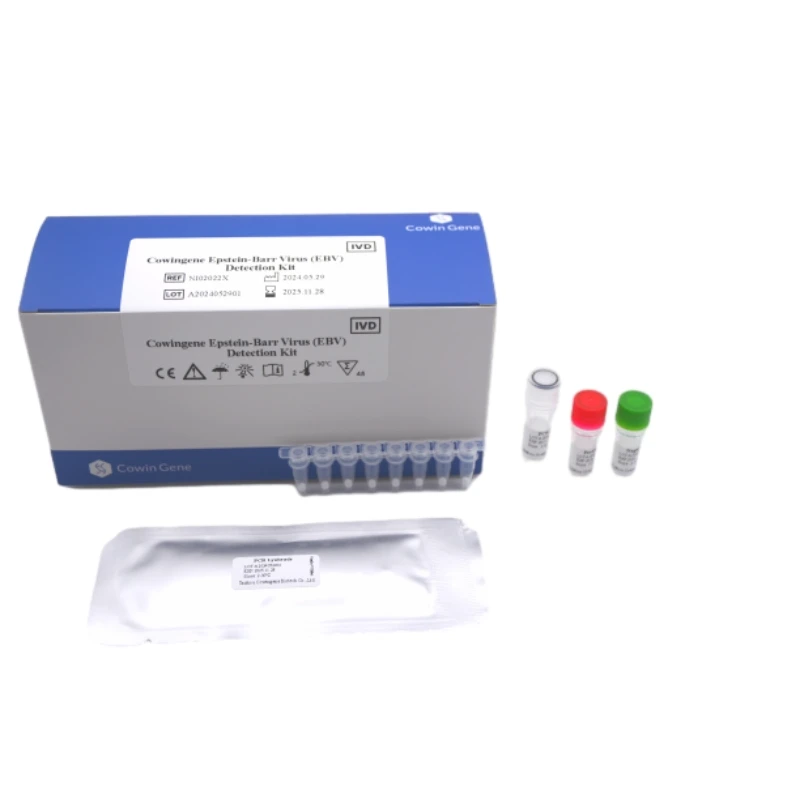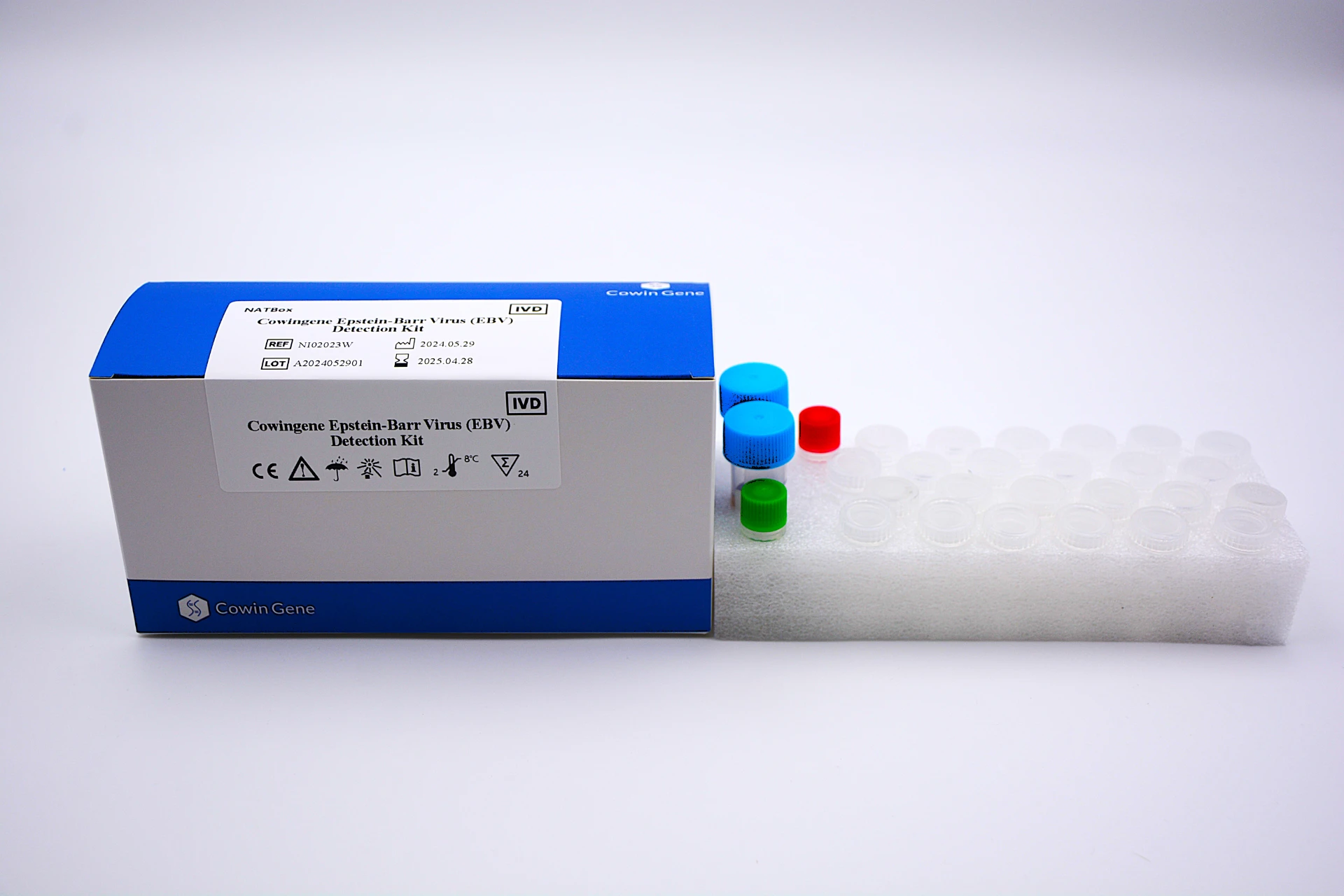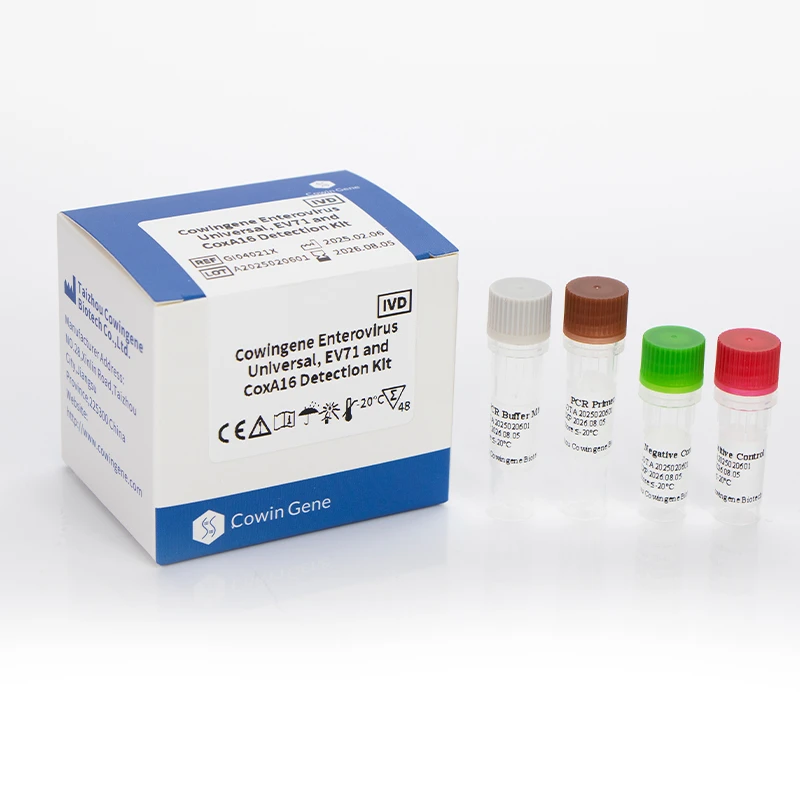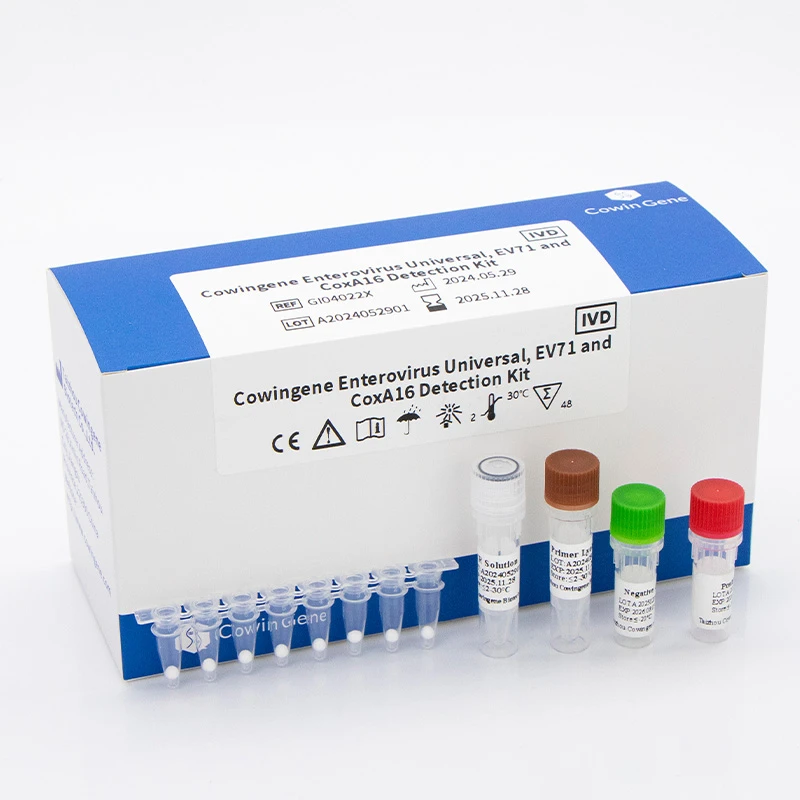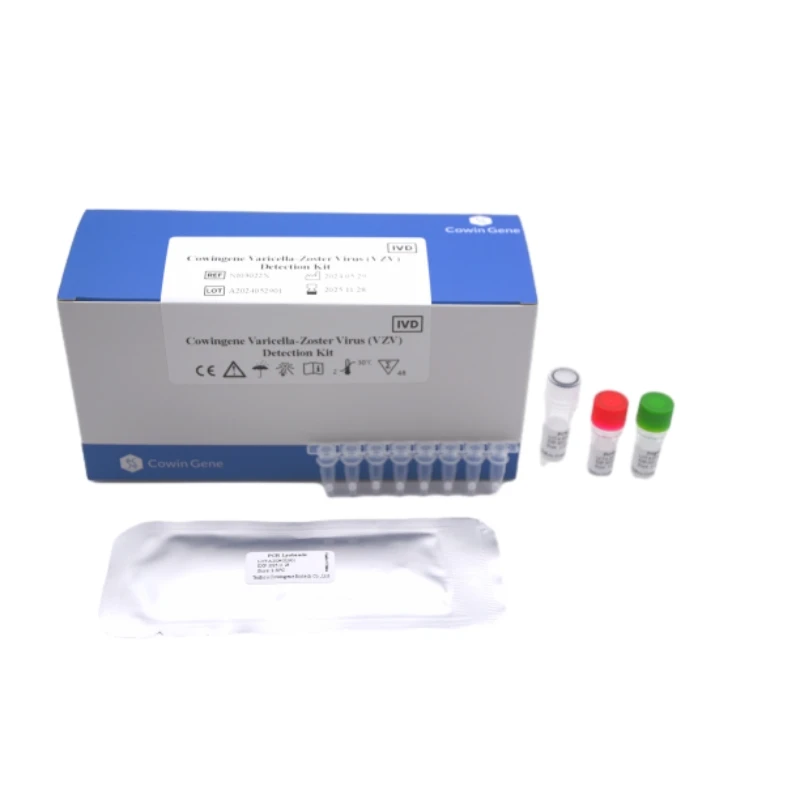Sep . 19, 2025 19:25 Back to list
CMV Detected: Accurate DNA PCR Testing & Monitoring Solutions
Understanding the Criticality of CMV Detection
Cytomegalovirus (CMV) remains a ubiquitous beta-herpesvirus, typically asymptomatic in immunocompetent individuals but posing significant morbidity and mortality risks in vulnerable populations. For clinicians and researchers managing transplant recipients, neonates, and immunocompromised patients, the accurate and timely diagnosis of CMV infection is paramount. This necessitates highly sensitive and specific diagnostic methods to identify the presence of the virus, particularly the viral DNA, which signifies active infection or viremia.
The ability to definitively determine if CMV detected is crucial for guiding antiviral therapy, monitoring treatment efficacy, and preventing severe clinical outcomes. Modern molecular diagnostics, specifically quantitative PCR (qPCR), have become the gold standard for this purpose, offering unparalleled precision in detecting and quantifying viral loads. The focus on `cmv dna detected` and `cmv dna qualitative pcr` techniques reflects the industry's progression towards more reliable and actionable diagnostic insights.
Industry Trends in CMV Diagnostics: Shifting Paradigms
The landscape of CMV diagnostics is continually evolving, driven by advancements in molecular biology and the increasing demand for rapid, accurate, and cost-effective solutions. Key trends include:
- Transition to Molecular Methods: While serological tests detect antibodies, PCR-based assays for `cmv dna detected` offer direct evidence of active viral replication, critical for patient management. This shift underscores the need for sensitive and specific `cmv dna qualitative pcr` platforms.
- Quantitative Viral Load Monitoring: The ability to quantify CMV DNA copies per milliliter of blood or other bodily fluids is vital. This allows clinicians to differentiate between active infection and latent virus, and to tailor antiviral dosages, minimizing toxicity while maximizing efficacy.
- Automation and High-Throughput: Clinical laboratories are increasingly adopting automated systems for nucleic acid extraction and PCR setup, reducing hands-on time, mitigating contamination risks, and improving turnaround times, especially critical in transplant centers.
- Point-of-Care (POC) Potential: Emerging technologies are exploring POC CMV detection, aiming to provide rapid results closer to the patient, particularly beneficial in resource-limited settings or for immediate clinical decisions.
- Genotyping and Drug Resistance: As antiviral resistance becomes a concern, advanced assays capable of identifying specific CMV genotypes or resistance mutations are gaining traction, though largely confined to specialized reference laboratories currently.
These trends highlight a clear trajectory towards more precise, efficient, and integrated diagnostic solutions, ultimately leading to improved patient outcomes and more informed clinical decisions when CMV detected is reported.

Illustration of advanced laboratory equipment for molecular diagnostics.
The Process Flow of CMV Detection: From Kit Development to Diagnostic Application
The development and application of CMV detection kits involve rigorous scientific and manufacturing processes to ensure accuracy and reliability.
A. Kit Development and Manufacturing Process
- Reagent Sourcing & Synthesis: High-quality raw materials, including oligonucleotides (primers and probes specific for CMV DNA), DNA polymerase enzymes, dNTPs, and reaction buffers, are sourced from certified suppliers. Primers and probes are custom-synthesized and rigorously purified.
- Formulation & Dispensing: Reagents are precisely formulated into master mixes, often lyophilized or provided in liquid format, ensuring stability and ease of use. This process is conducted under controlled environmental conditions to prevent contamination.
- Quality Control & Validation: Each batch undergoes extensive QC, including:
- Analytical Sensitivity (Limit of Detection - LoD): Determined using serially diluted reference materials (e.g., WHO International Standard for CMV DNA).
- Analytical Specificity: Cross-reactivity testing against other common pathogens and human DNA.
- Linearity & Dynamic Range: Verification of accurate quantification across a wide range of viral loads.
- Precision & Reproducibility: Intra-assay and inter-assay variability testing.
- Stability Testing: Accelerated and real-time stability studies to determine shelf life (typically 12-24 months for reagents).
- Regulatory Compliance: Adherence to international testing standards such as ISO 13485 for medical device quality management systems. Products are often CE-IVD marked for European markets and may seek FDA clearance or Emergency Use Authorization (EUA) for others, ensuring market readiness and clinical utility.
- Packaging & Distribution: Kits are packaged with clear instructions for use (IFU), lot numbers, and expiration dates, then distributed to target industries including clinical diagnostic laboratories, blood banks, and research institutions globally.
B. Diagnostic Application Workflow for CMV Detected
- Sample Collection: Appropriate biological samples (e.g., whole blood, plasma, urine, cerebrospinal fluid, tissue biopsies) are collected following established clinical protocols.
- Nucleic Acid Extraction: CMV DNA is extracted from the collected samples. This step often utilizes automated platforms and validated commercial kits to ensure high yield and purity of viral DNA, crucial for reliable `cmv dna detected` results.
- PCR Amplification & Detection: The extracted DNA serves as a template for real-time quantitative PCR (qPCR). Specific primers amplify target regions of the CMV genome, while fluorescent probes (e.g., TaqMan probes) allow real-time monitoring of amplification. Internal controls are included to confirm successful extraction and amplification, ensuring the integrity of the `cmv dna qualitative pcr` process.
- Data Analysis & Interpretation: A qPCR instrument software analyzes the fluorescence data, generating cycle threshold (Ct) values. These values are compared against a standard curve generated from known CMV DNA concentrations to quantify viral load (copies/mL or IU/mL). Results are interpreted as CMV detected (with quantification) or not detected.
- Reporting: A comprehensive report is generated for the requesting clinician, detailing the viral load, the detection limit of the assay, and any relevant interpretive comments.
The advantages of this meticulous process include high analytical sensitivity, excellent specificity, rapid turnaround times, and the ability to accurately monitor viral kinetics, crucial for managing CMV disease.
Technical Specifications for Advanced CMV DNA Detection
Modern assays for CMV detected incorporate advanced technical parameters designed to deliver superior performance in clinical settings. Understanding these specifications is critical for laboratories evaluating and implementing CMV diagnostic solutions.
Key Parameters for CMV DNA Qualitative PCR Kits
These specifications are crucial for ensuring the reliability of `cmv dna detected` results, enabling confident clinical decision-making. The adoption of the WHO International Standard for CMV DNA also facilitates comparability of results across different laboratories and assays, a significant step towards standardization in CMV viral load monitoring.
Application Scenarios: Where Accurate CMV Detection Matters Most
The clinical utility of precise CMV detected results spans multiple critical medical fields, impacting patient management and public health outcomes. Understanding these scenarios underlines the necessity for robust diagnostic tools.
- Solid Organ Transplant (SOT) and Hematopoietic Stem Cell Transplant (HSCT) Recipients: CMV is a leading cause of morbidity and mortality in transplant patients. Routine monitoring for `cmv dna detected` is essential for pre-emptive therapy, allowing clinicians to initiate antiviral treatment before symptomatic disease develops, significantly improving graft survival and patient outcomes.
- Congenital CMV Infection: CMV is the most common infectious cause of birth defects in developed countries. Early detection of `cmv dna qualitative pcr` in newborns (e.g., from urine or saliva) can identify infants at risk of long-term neurodevelopmental sequelae, enabling timely intervention with antiviral therapy.
- Immunocompromised Individuals (e.g., HIV/AIDS, Cancer Patients): These patient groups are highly susceptible to CMV reactivation, which can lead to severe end-organ disease (retinitis, colitis, encephalitis). Regular monitoring helps manage opportunistic infections and guides therapeutic strategies.
- Blood and Blood Product Screening: While less common in high-income countries due to routine leukoreduction, screening for `cmv dna detected` in blood donors, particularly for immunocompromised recipients, remains a critical measure to prevent transfusion-transmitted CMV.
- Research and Vaccine Development: Accurate detection and quantification of CMV DNA are indispensable for research into viral pathogenesis, antiviral drug development, and vaccine efficacy studies.
In each of these scenarios, the rapid and accurate identification of CMV detected viral loads empowers medical professionals to make informed decisions that directly impact patient survival and quality of life.

Laboratory professional preparing samples for advanced diagnostic analysis.
Technical Advantages of Advanced CMV Detection Systems
Investing in cutting-edge `cmv dna detected` technologies offers distinct technical advantages that translate directly to improved laboratory efficiency and enhanced patient care.
- Superior Analytical Performance: Modern qPCR assays offer exceptional sensitivity (LoD down to
- Quantitative Accuracy and Reproducibility: Standardized assays, often calibrated against the WHO International Standard, provide highly reproducible quantitative results. This allows for precise monitoring of viral load trends, which is indispensable for tracking disease progression and response to antiviral therapy.
- High Throughput and Automation Compatibility: Fully automated platforms integrate nucleic acid extraction, PCR setup, and amplification/detection, enabling laboratories to process a large number of samples with minimal manual intervention. This reduces labor costs, increases sample capacity, and reduces the risk of human error or contamination.
- Rapid Turnaround Times: With optimized protocols and automated systems, results for `cmv dna qualitative pcr` can often be available within hours, facilitating prompt clinical action, particularly in urgent care settings like transplant units.
- Comprehensive Internal Controls: Robust internal controls ensure the validity of every test, detecting potential PCR inhibition or extraction failures, thus guaranteeing the reliability of both positive and negative `cmv dna detected` results.
- Scalability and Flexibility: Advanced systems are often modular, allowing laboratories to scale their testing capacity based on demand. Many platforms can also run multiple assays concurrently, maximizing instrument utilization.
These technical advantages collectively contribute to a more efficient, reliable, and clinically impactful diagnostic service, directly addressing the complex challenges associated with CMV management.
Vendor Comparison: Selecting the Optimal CMV Detection Solution
Choosing the right vendor for CMV detected solutions involves a thorough evaluation of technical specifications, regulatory compliance, system integration, and support. Laboratories must consider a holistic package that aligns with their operational needs and budget.
Comparative Analysis of Leading CMV Detection Platforms
This comparison highlights the varying capabilities across leading providers. Laboratories should assess their specific needs for sensitivity, throughput, automation, and regulatory requirements before making a procurement decision. The long-term support and potential for customized solutions also play a significant role in determining the total cost of ownership and operational efficacy.
Customized Solutions for CMV Diagnostics
Recognizing that not all laboratories have identical requirements, leading manufacturers offer customized solutions to address unique operational and clinical needs for CMV detected assays. This flexibility can be crucial for specialized research facilities or large-scale diagnostic hubs.
- Tailored Assay Panels: Development of multiplex PCR assays to simultaneously detect CMV and other relevant pathogens (e.g., EBV, BKV) from a single sample, optimizing efficiency for transplant monitoring.
- Integration with Existing Lab Automation: Custom software development and hardware adaptations to integrate CMV detection platforms with a laboratory's existing automation infrastructure, including liquid handlers and Laboratory Information Systems (LIS).
- Flexible Reagent Packaging: Provision of reagents in bulk formats or specific plate configurations to match high-throughput demands or to minimize waste in lower-volume settings. This includes custom master mix formulations.
- Research & Development Collaboration: Partnership opportunities for academic or research institutions to develop novel CMV detection assays, including those targeting specific viral genotypes, drug resistance markers, or unconventional sample types.
- Scalable Instrument Configurations: Offering instrument platforms that can be expanded with additional modules (e.g., more extraction channels, increased thermal cycler capacity) as laboratory testing volumes grow.
These customized approaches ensure that diagnostic laboratories can implement highly optimized workflows for `cmv dna detected` and `cmv dna qualitative pcr` testing, maximizing efficiency and clinical impact.
Application Case Studies: Real-World Impact of CMV Diagnostics
The practical application of robust CMV detection methods has a demonstrable impact on patient management and healthcare outcomes.
Case Study 1: Optimizing Transplant Patient Management
A major transplant center faced challenges with delayed CMV diagnosis and escalating healthcare costs due to symptomatic CMV disease in post-transplant patients. They transitioned from conventional qualitative PCR to a high-sensitivity, quantitative `cmv dna detected` assay integrated with their automated LIS. The new system offered an LoD of 20 IU/mL and a TAT of 3 hours. Over a year, the center reported a 40% reduction in confirmed CMV disease events and a 25% decrease in antiviral drug expenditure, attributed to earlier initiation of pre-emptive therapy guided by precise viral load monitoring when CMV detected was reported. This led to significantly improved patient survival rates and a reduction in hospital readmissions for CMV-related complications.
Case Study 2: Enhancing Neonatal Congenital CMV Screening
A regional children's hospital implemented a universal neonatal CMV screening program utilizing a highly sensitive `cmv dna qualitative pcr` assay. Previously, screening was only performed on symptomatic infants or those failing newborn hearing tests. With the new program, the hospital was able to detect congenital CMV in 0.6% of apparently asymptomatic newborns. Early diagnosis enabled prompt initiation of antiviral treatment for eligible infants within the critical window, leading to a significant reduction in the severity of hearing loss and other neurodevelopmental issues at 12 and 24-month follow-ups compared to historical cohorts. This initiative underscored the power of broad-scale, accurate `cmv dna detected` screening in improving long-term health outcomes for affected infants.
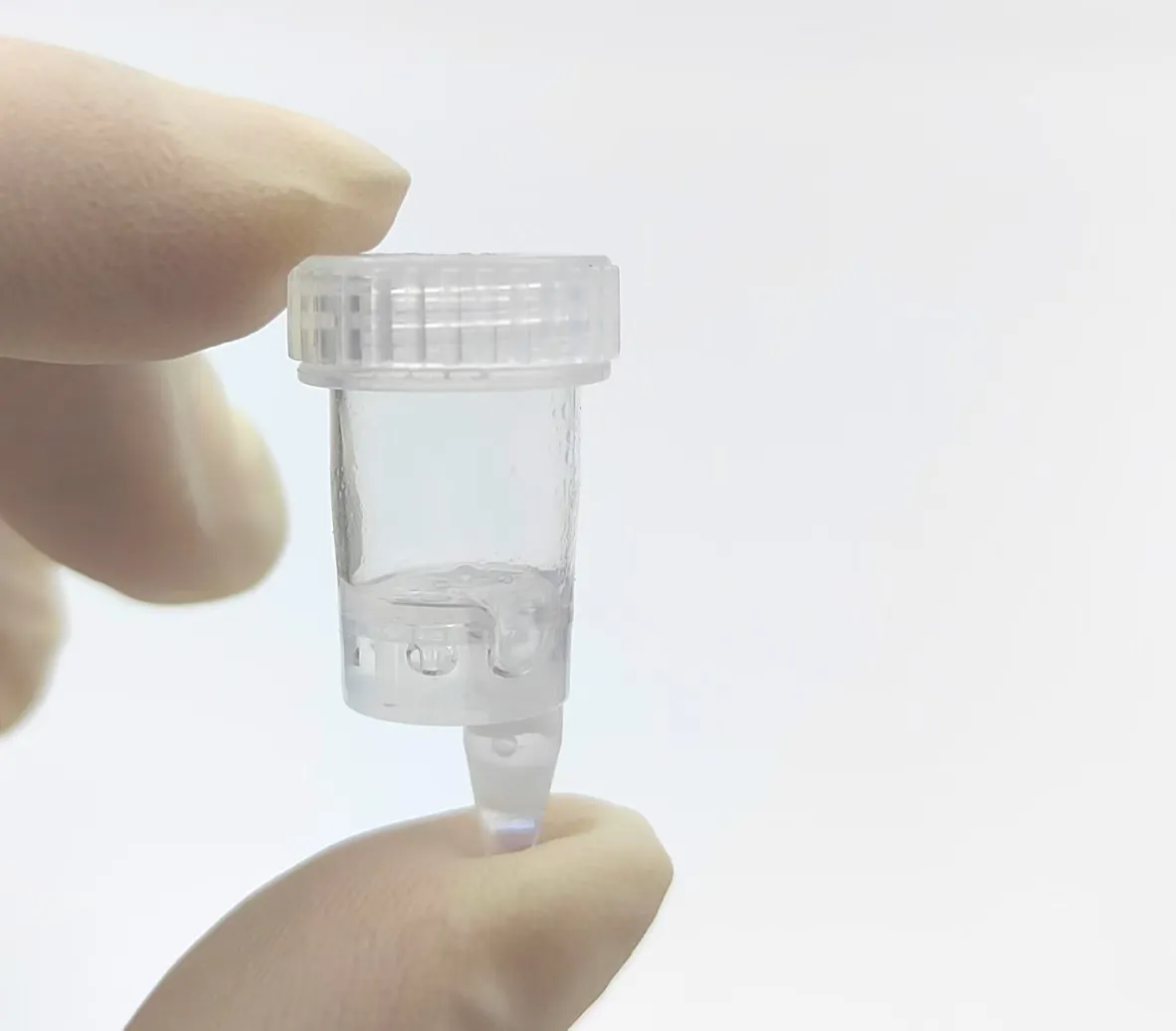
Scientific professionals analyzing diagnostic results for viral infections.
Ensuring Trust: Compliance and Comprehensive Support
Adherence to Google's standards (Expertise, Experience, Authoritativeness, Trustworthiness) is fundamental in the B2B diagnostic sector. A reputable provider of CMV detected solutions demonstrates this through robust certifications, proven track record, and unwavering customer commitment.
Authoritativeness & Expertise
- Certifications: Products are developed and manufactured under stringent quality management systems, typically ISO 13485 certified. Furthermore, assays often hold CE-IVD marking for European markets and may possess FDA 510(k) clearance or Emergency Use Authorization (EUA) in the US, signifying adherence to high regulatory standards.
- Years of Service: Decades of experience in molecular diagnostics, focusing on infectious disease detection, underscore a deep understanding of diagnostic needs and technological evolution.
- Collaborations: Partnerships with leading academic institutions, clinical laboratories, and public health organizations ensure that products are scientifically sound and clinically relevant.
- Peer-Reviewed Validation: Independent validation studies and publications in scientific journals further attest to the performance and reliability of `cmv dna detected` assays.
Trustworthiness & Customer Support
Frequently Asked Questions (FAQ) about CMV Detection
Q: What is the primary advantage of qPCR for CMV detection?
A: qPCR provides quantitative results (viral load), allowing for precise monitoring of infection, differentiation between active infection and latent virus, and guiding pre-emptive antiviral therapy.
Q: How does `cmv dna qualitative pcr` differ from serology?
A: Serology detects antibodies, indicating past or present exposure. PCR directly detects viral DNA, signifying active infection or viremia, which is crucial for acute clinical management in immunocompromised patients.
Q: What sample types are suitable for `cmv dna detected`?
A: Commonly used samples include plasma, whole blood, urine, cerebrospinal fluid (CSF), and tissue biopsies, depending on the clinical context.
Q: Are internal controls included in your CMV detection kits?
A: Yes, all our kits incorporate robust internal controls to validate nucleic acid extraction efficiency and detect potential PCR inhibition, ensuring reliable results.
Lead Time & Fulfillment
We maintain efficient supply chain management to ensure prompt delivery. Standard lead times for CMV detection kits are typically 3-5 business days for domestic orders and 7-14 business days for international shipments, subject to regulatory clearance. Custom orders may have adjusted timelines, communicated transparently during the quotation process.
Warranty Commitments
Our CMV detection kits are backed by a comprehensive warranty, guaranteeing performance in accordance with stated specifications until the indicated expiration date, provided they are stored and used as per the Instructions For Use (IFU). Any deviations from expected performance are addressed promptly through our customer support channels.
Customer Support & Technical Assistance
We offer dedicated technical support from experienced molecular biologists and application specialists. This includes assistance with assay setup, troubleshooting, data interpretation, and training for laboratory personnel. Our goal is to ensure seamless integration and optimal performance of our CMV diagnostic solutions in your laboratory.
Conclusion
The reliable and accurate detection of CMV, specifically through advanced `cmv dna detected` and `cmv dna qualitative pcr` methodologies, is indispensable in modern clinical diagnostics. From guiding life-saving therapies in transplant recipients to enabling early intervention for congenital CMV, the impact of robust CMV detected solutions cannot be overstated. By focusing on superior technical specifications, comprehensive quality assurance, and unwavering customer support, providers in this critical field empower healthcare professionals with the tools needed to make confident, timely decisions that significantly enhance patient outcomes. As diagnostic technologies continue to advance, the commitment to innovation and excellence in CMV detection will remain a cornerstone of patient care.
References
- Ljungman P, et al. Guidelines for the management of cytomegalovirus infection in patients with haematological malignancies and haemopoietic stem cell transplantation. Bone Marrow Transplant. 2017;52(1):2-13.
- Kotton CN, et al. Updated International Consensus Guidelines on the Management of Cytomegalovirus in Solid-Organ Transplantation. Transplantation. 2018;102(6):900-931.
- Boppana SB, et al. Neurodevelopmental outcomes of children with symptomatic congenital cytomegalovirus infection. J Pediatr. 2013;163(5):1359-1365.e3.
- World Health Organization. WHO International Standard for Human Cytomegalovirus (CMV) for Nucleic Acid Amplification Technology (NAT)-based assays. WHO Reference Materials. 2016.
- Manuel O, et al. Preemptive therapy for cytomegalovirus infection in solid organ transplant recipients. Transplantation. 2012;93(2):S16-27.
Related PRODUCTS
-
Understanding Monkeypox Testing PCR – Global Health & Diagnostic Insights
NewsNov.24,2025 -
Comprehensive Guide to Monkey Pox Detection: Methods, Applications & Innovations
NewsNov.23,2025 -
Essential Guide to Monkeypox Detection: Technologies, Applications & Future Trends
NewsNov.23,2025 -
Understanding Strep B Test Cost: Global Insights and Healthcare Impact
NewsNov.22,2025 -
Group B Strep DNA Test – Fast, Accurate Screening to Prevent Neonatal Infection
NewsNov.21,2025 -
Essential Guide to Group B Strep Test Kits: Benefits, Uses & Innovations
NewsNov.20,2025


